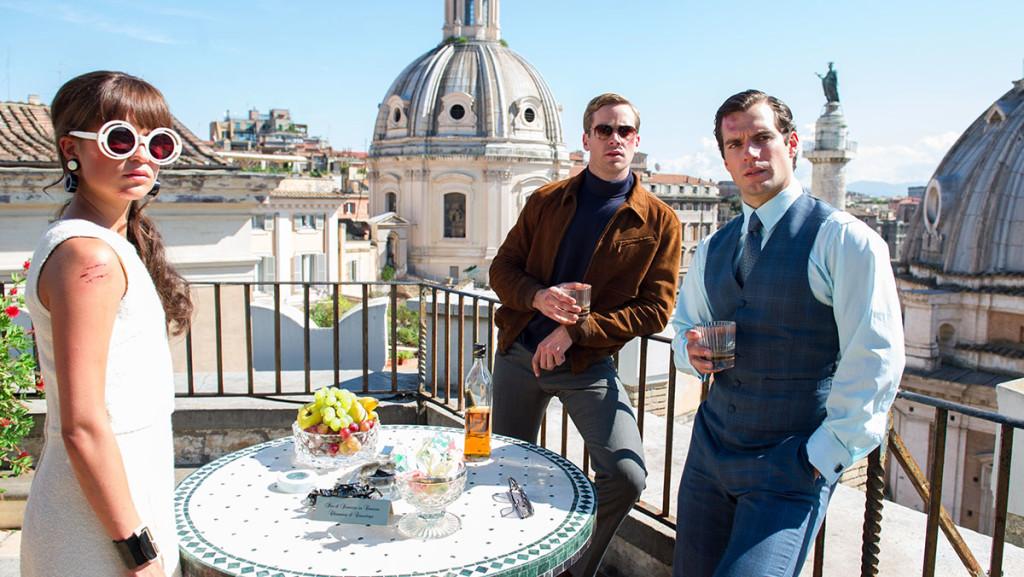The scene begins on a darkened street in East Berlin, circa 1963. A woman, Gaby (Alicia Vikander), drives her car to a stop light as a second car sits beside her. Everything seems quiet and calm, until the CIA agent hiding in her back seat, Napoleon Solo (Henry Cavill), asks her to hum if the man in the second car, KGB agent Illya Kuryakin (Armie Hammer), is looking at her. She hums, prompting Solo to ask if only one of his hands is on the wheel, to which she hums again. He then assures her in a hushed tone, finishing up with, “when you hear something that sounds like a gunshot, drive.” Three silenced shots are heard, she stomps on the gas, Illya ducks from the shots and promptly speeds after them. The chase is on.
Lacking in neither style nor substance, “The Man from U.N.C.L.E.” is an adaptation of the hit 1960s TV show that follows the aforementioned agents as they attempt to team up with Ilya, a member of the former Russian secret police and intelligence agency, to save the world from total destruction during the height of the Cold War. Gaby and Solo work not only to survive the mission, but to survive each other as well, learning along the way that the side they may fight for isn’t always as important as who they fight to save. The film serves as an enjoyable blend of Bond and Bourne, serving up a healthy dose of action and entertainment clothed in ’60s glitz and grime. “The Man from U.N.C.L.E.” is filled with charismatic leads, a sharp if not oddly paced script and a tone allowing the actors and audience to take the film just seriously enough to be engulfed in the atmosphere without forgetting to have fun at the same time.
The strongest point of the film is the chemistry between the two leads themselves. Cavill manages to capture the suave, yet dangerous charm of Solo, while Hammer excellently encapsulates the image of the ideal Russian soldier without falling too much into the world of stereotypes, particularly during moments when he speaks about his father’s watch or his tragic childhood. Both men play off each other well and forge a bond of competitive camaraderie, whether they’re picking locks during a break-in at a shipping factory or picking out outfits at the start of their mission for Gaby’s cover. Their quippy retorts at each other’s expense make the audience consistently wonder whether they are going to fight the guards or simply settle for fighting each other, while feeling equally satisfied with either result.
The atmosphere in this film is also outstanding, as the art direction wasted no effort in working to capture the colorful essence of the swinging ’60s. The costumes blend seamlessly into their environment as the mix of suits and spy attire never distracts from the plot and eases the audience into the film without distraction from unnecessary pieces. The viewers may feel as though they have stepped directly into the world of Cold War–era Europe, never too far from action or adventure.
That being said, the film doesn’t offer as much of either as one would expect. While there is action scattered throughout, the film focuses more time and effort on the espionage aspect of the spy genre and leaves the film feeling unbalanced at times. The pacing during these moments, especially during the middle of the film when both Solo and Illya investigate the shipping factory, is quite disjointed, and the film never seems to know whether it wants to go the action route or spy route, leaving some scenes lost.
These moments, however, are only seen sparingly throughout the film and don’t detract from the main purpose of this movie: to take an interesting premise with enjoyable characters and to have fun with all of the scenarios into which they can find themselves thrown. “The Man from U.N.C.L.E.” is a loving send-off to the retro spy flicks of yesteryear that not only possess the charm, but the staying power as well.




















